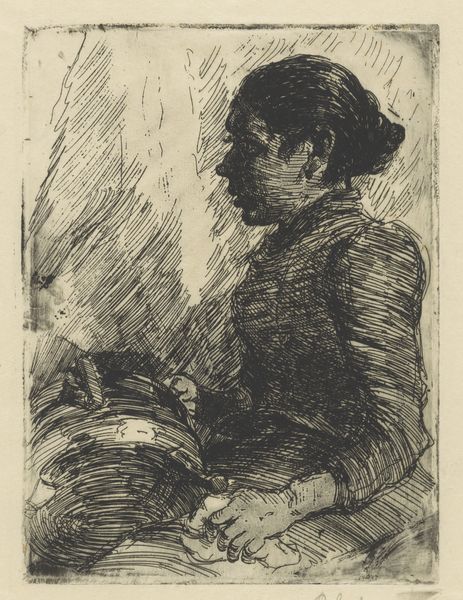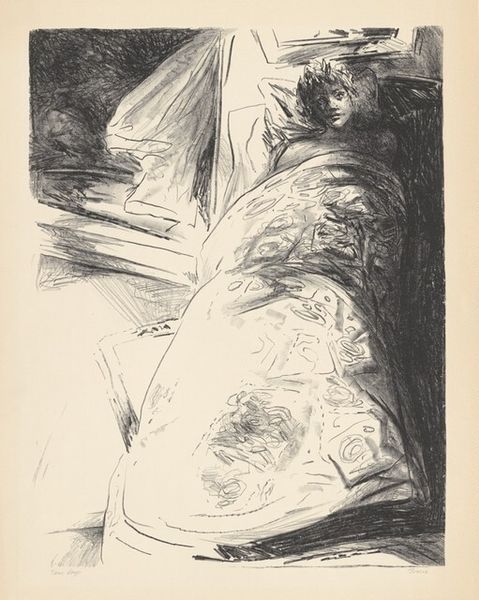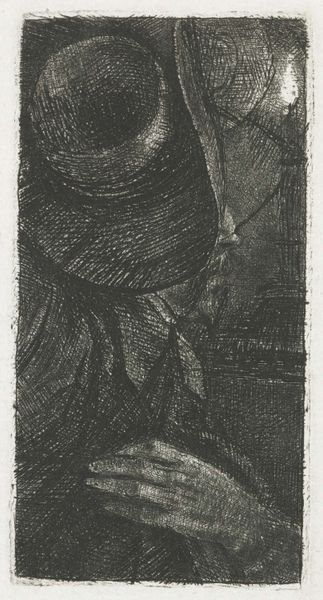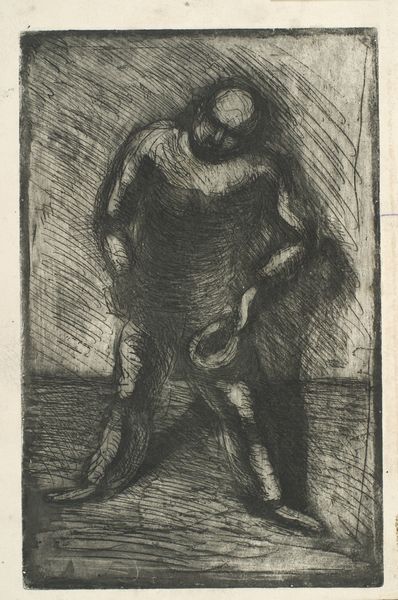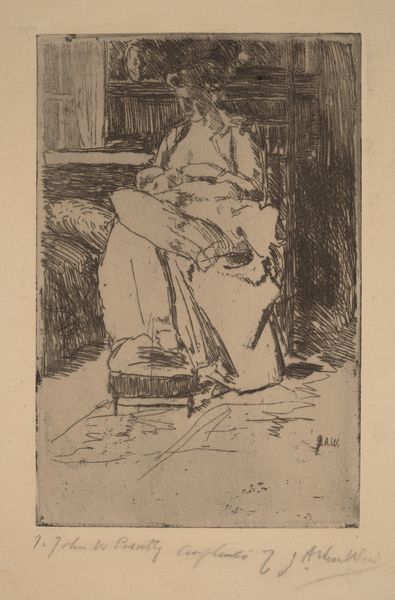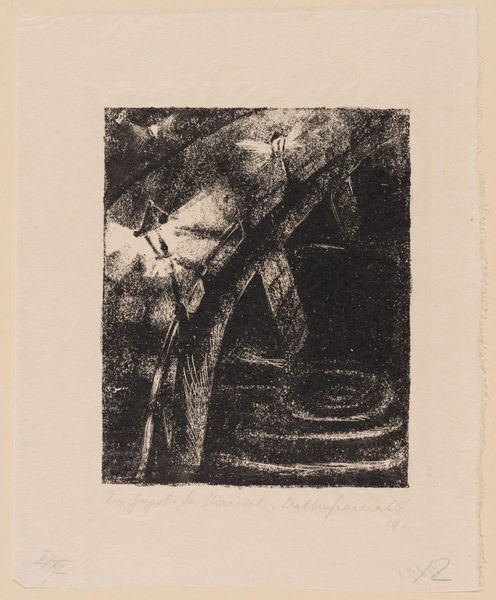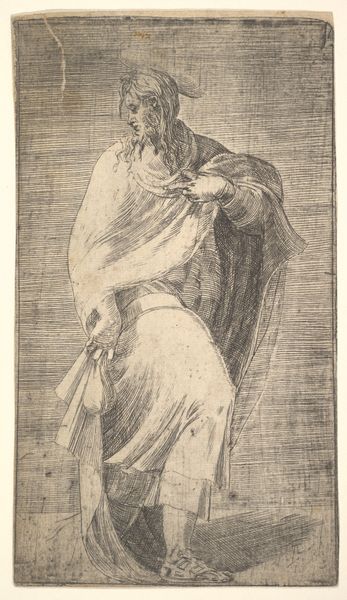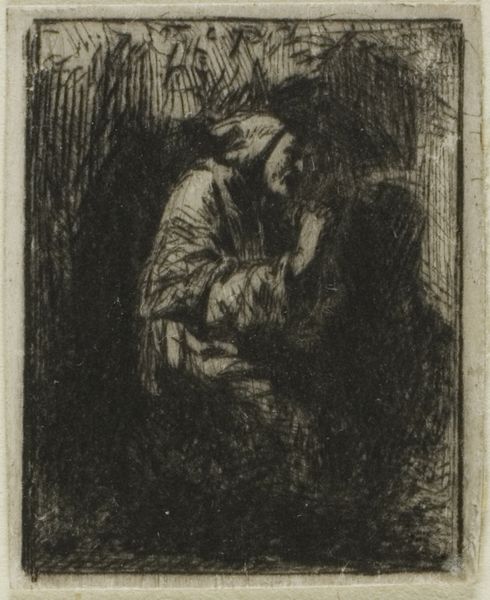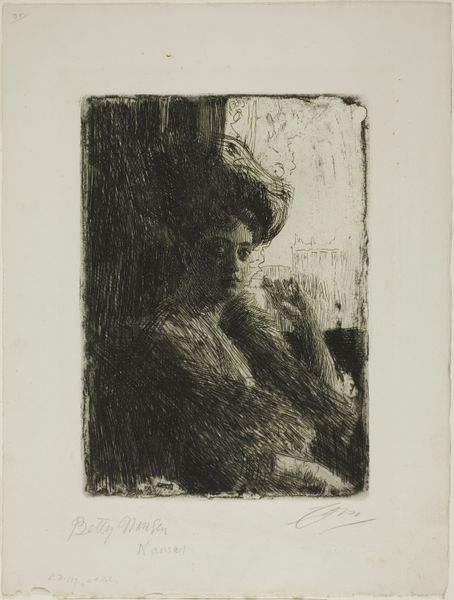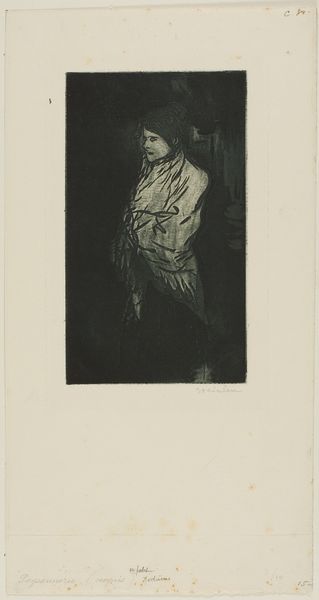![Woman Reading [Donna che legge] by Umberto Boccioni](/_next/image?url=https%3A%2F%2Fd2w8kbdekdi1gv.cloudfront.net%2FeyJidWNrZXQiOiAiYXJ0ZXJhLWltYWdlcy1idWNrZXQiLCAia2V5IjogImFydHdvcmtzLzgzNTRkNTZkLWFhMTctNDRhMi1iZDBhLWIyNmRmYTA0NWZmZS84MzU0ZDU2ZC1hYTE3LTQ0YTItYmQwYS1iMjZkZmEwNDVmZmVfZnVsbC5qcGciLCAiZWRpdHMiOiB7InJlc2l6ZSI6IHsid2lkdGgiOiAxOTIwLCAiaGVpZ2h0IjogMTkyMCwgImZpdCI6ICJpbnNpZGUifX19&w=3840&q=75)
print, etching
#
portrait
# print
#
etching
#
figuration
#
futurism
Dimensions: sheet: 49.5 × 34.5 cm (19 1/2 × 13 9/16 in.) plate: 15 × 8.5 cm (5 7/8 × 3 3/8 in.)
Copyright: National Gallery of Art: CC0 1.0
Editor: Here we have Umberto Boccioni's "Woman Reading", made around 1910. It's an etching, giving it a delicate, linear quality. The mood feels…intimate, like a captured moment. What do you make of this piece, especially within its historical context? Curator: Considering the era, we must see this not just as a simple portrait, but through the lens of Futurism. Boccioni, a key figure, was pushing for Italy's modernization. What role do you think the depiction of a woman engaged in reading plays within that call for modernization? Editor: It’s interesting you ask. Perhaps it implies progress, a woman actively learning and engaging with the world, reflecting those values of progress? But wouldn't that still be quite conventional? Curator: Precisely. It's not just the subject, but how it’s rendered. Notice the almost frantic energy of the lines, the way they seem to vibrate around her. Consider Futurism's manifesto obsession with speed, dynamism, and industry. Do you see echoes of those themes in this seemingly quiet scene? What else stands out to you? Editor: Yes! It’s as if the act of reading is itself vibrating with energy, not still and serene. There’s movement even in stillness, implying… constant becoming? Curator: A keen observation! This challenges traditional portraiture that often froze subjects in time, offering instead, an artwork actively engaged in the rapid transformation of the early 20th century. This seemingly private act of reading is shown as radical! Considering that museums shape perceptions of cultural value, where does this print belong, if not for private contemplation, or to become the vector for cultural change? Editor: That's such a helpful way to view it! It transforms my understanding, seeing it as a deliberate statement and how museums today should represent such transformation. Curator: And mine as well, I learned that our contemporary experience of what constitutes social or cultural value may blind us from the original purpose behind artworks when they were initially unveiled.
Comments
No comments
Be the first to comment and join the conversation on the ultimate creative platform.
